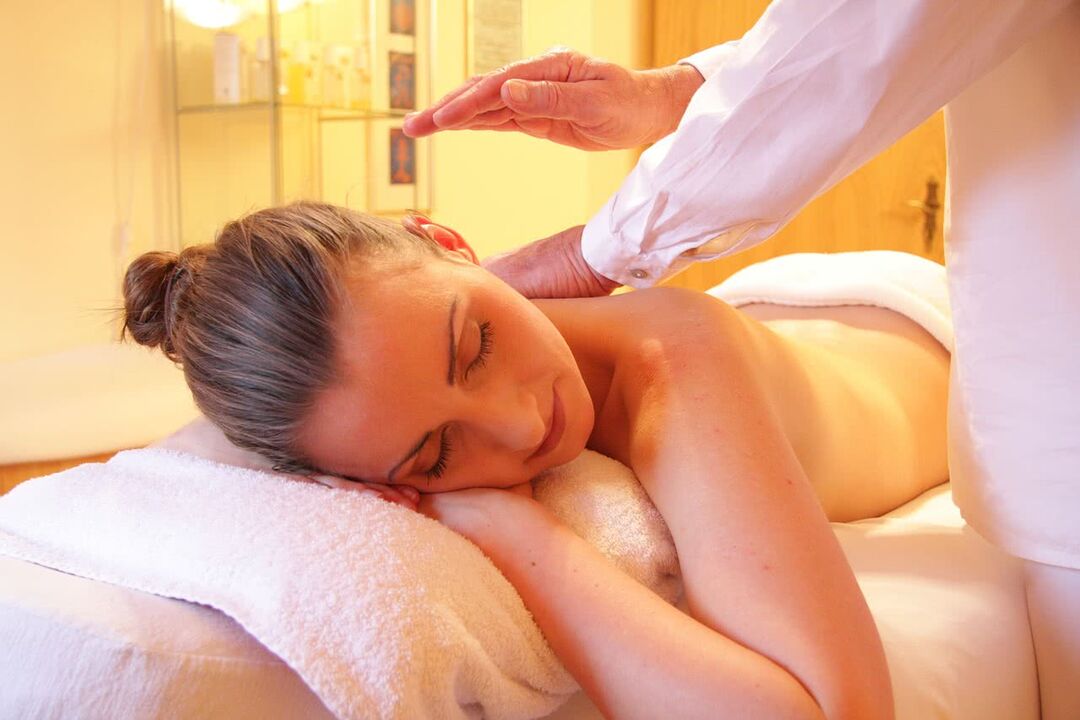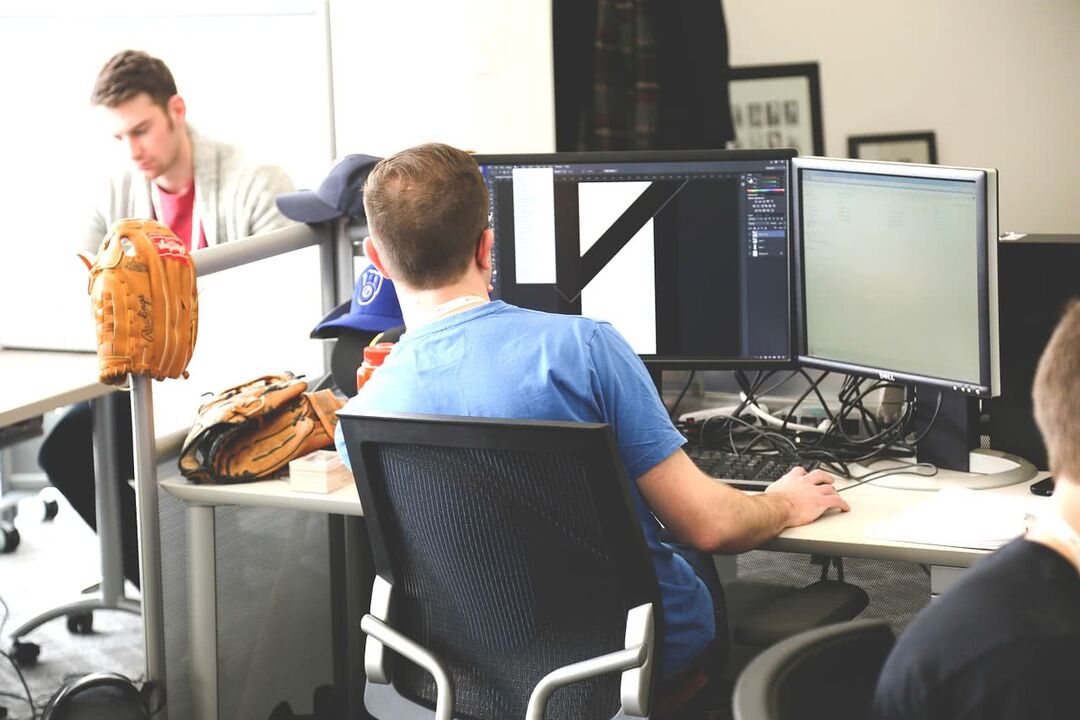Thoracic osteochondrosis is a disease in which the intervertebral discs in the thoracic spine are destroyed. As this department is the most inactive, it is less susceptible to disease.
For thoracic osteochondrosis, spasms and pain in the chest, under the ribs, shortness of breath, stabbing, cutting, sharp pain behind the sternum are characteristic. The symptoms and manifestations of the disease can be similar to other diseases.
Symptoms
Back pain is the most common and superficial symptoms. Of course, they do not always talk about the development of osteochondrosis in a person. Therefore, you should pay attention to other sensations in the body:
- Discomfort and pain in the chest. Often, with a sedentary lifestyle, you may not realize this. But as soon as you start doing any physical activity that speeds up your breathing, you will notice that the pain intensifies. The nature of this pain can be called waist.
- In addition, you may feel pain in completely unexpected places - the area of the heart, stomach, liver. This is due to the fact that thoracic osteochondrosis tends to "mask" as a particular disease. For example, many may confuse it with gastritis, ulcer or angina pectoris.
- If you notice that periodically in the chest area you have "goose bumps", then, in combination with other manifestations, this may indicate thoracic osteochondrosis.
- In some cases, there may be loss of sexual function, for example, impotence in men.
Pain in thoracic osteochondrosis
One of the main features of this type of pain is the brace. But it is not always possible to recognize this pain for her. Here is another way it can be felt and characterized:
- most often it manifests itself in the dark, behind the sternum;
- a feeling that can be described as "a stake in the chest";
- discomfort in the hypochondrium, both on the right and on the left;
- sensation as if there was some foreign body behind the sternum;
- if the lesion only touched the upper part of the thoracic region, pain may be felt by a person in the region of the esophagus and pharynx.
As these symptoms are still very vague and could indicate a number of other conditions, the doctor recommends an additional ECG test.
Effect on organs
In the development process, this disease can have a negative impact on Organs internal organs, namely the lungs and heart. Here is what thoracic osteochondrosis can entail:
- effect on the heart. Mainly, it causes compression of the nerve roots in the chest area. After all, that's where the cardiac nerve plexuses come from. It is these plexuses that regulate the work of the heart. The main alarms here are regular heart palpitations (extrasystoles), arrhythmia, tachycardia. Effects on the circulatory system, therefore, can appear in any or all of these symptoms at the same time;
- effect on the lungs. It manifests itself most often in difficulty breathing and painful sensations at the same time.
Why does thoracic osteochondrosis appear?
Despite the fact that osteochondrosis as a holistic disease is quite common, thoracic osteochondrosis is less common. The prerequisites for the occurrence of this disease can already be found in schoolchildren who, grimacing, are sitting at their desks. Because of this, children can develop scoliosis, and at a more mature age - osteochondrosis. Most other causes of development are closely related to scoliosis:
- violation of posture;
- violation of metabolic processes that affect the integrity of intervertebral discs;
- sedentary lifestyle;
- hereditary causes;
- spinal injury;
- static work and prolonged standing in an uncomfortable, twisted posture.

How to treat?
After an accurate diagnosis has been established during the tests, the doctor prescribes a special medication. In the case of thoracic osteochondrosis, it may include the following drugs, depending on the severity of the disease and the characteristics of its manifestation:
- First, medications are prescribed that "remove" pain and relieve discomfort. They are called non-steroidal anti-inflammatory drugs or glucocorticosteroids.
- To prevent the lack of fluid in the intervertebral disc, papain is used.
- Prescribe drugs called "chondroprotectors". With their help, there is a general strengthening of the cartilage tissue.
- Medications that relieve spasms in the muscles around the spine can be added to the list.
- If the development of the inflammatory process is detected, then a special anti-inflammatory therapy is prescribed.
But, of course, drugs alone cannot be cured. Make sure you follow a healthy lifestyle, proper nutrition. These actions will be useful not only for the treatment, but also for the prevention of this and many other diseases.
Exercises for Thoracic Osteochondrosis
As the lack of physical activity is one of the fundamental causes of the development of the disease, the role of exercise in this case is great. Also, by complementing the drug treatment with exercise, your body will return to normal and stabilize much faster.
There are a number of special exercises for the thoracic region. When performing them, follow the basic rules: no bumps, act slowly, smoothly, without trying to overload the body. An increase in amplitude is permissible, but only if you do not feel pain. So what are the most effective exercises that physical therapy provides?
- Lie on the floor on your stomach. The hands are along the body. We bend in the thoracic region - gently, gently. Raise your arms and head as high as you feel, but try to avoid the pain. It is recommended to perform at least 5 approaches.
- For the next exercise, we need a chair with a small, strong back. We sat up straight in a chair. We exhale, bending backwards, while moving our hands back. Then we return to the starting position. We repeat 10-12 times.
- We got up straight. Hands at the seams, legs together. Take a deep breath and raise your hands. As you exhale, slowly lean back and lower your arms. We return to the starting position. It is recommended to do 7-9 sets at a time.
- Get on the floor on all fours. Slowly bend your back as you inhale, as you exhale, return to the starting position. Repeat the exercise 7-10 times.
- We lay face down on the floor. Hands at the seams. Your task is to pull the body off the ground, stretching the head to the heels. We pull the whole body, work the chest. The required number of approaches is 7-8.
- We work with the upper part of the thoracic region. Starting position - arms at the seams, feet shoulder-width apart. We work with the shoulders. We lift them together first, then each separately. We twist the shoulders forward - backward, forward - backward. We perform 10-15 approaches for each task.
- Also, for the upper part of the thoracic region, you can perform circular movements with your hands. Starting position, as in the previous task. Stretch your arms to the sides, close your palms into fists. We perform the rotation of the wrists forward - backward, then the rotation of the elbow arm - forward and backward, then the whole arm forward and backward. We perform each part of the exercise 4-6 times, in general we repeat the exercise 2-4 times.
Work out in the morning and at night, giving yourself at least 15-20 minutes. Dilute it with a set of exercises for other muscle groups by entering several of the options described above.
Massage
Massage is also a very good tool in the fight against osteochondrosis. Here there is a therapeutic massage, which is prescribed by a specialist after a thorough examination of the patient. You can also do it at home - here are some options on how it can be done.

Honey massage. We will need 2-3 tablespoons of honey, preferably non-crystallized, hot. We dip the palms in honey so that they are covered with a thin layer. We apply it to the area behind the sternum and forcefully pull it out, repeat several times, moving the palms from one place to another.
This massage should not be done for a long time as it causes pain. Enough 10-15 minutes for a session. The skin after that will turn red, will "burn".

Classic massage. It consists of several steps, which include: stroking, kneading, vibrating, rubbing. It is recommended to carry out massage using a cream or ointment against osteochondrosis - it can be recommended to you by the assistant specialist.
The duration of this massage should not exceed 20 minutes, and the total course of treatment in this way should not include more than 11 to 13 sessions. As a preventive measure, it is also recommended to knead the neck, arms, shoulders, buttocks and even legs.
home treatments
In addition, for the treatment of thoracic osteochondrosis, there are alternative methods. For example, rubbing is very good, the base of which can also be used when performing a massage. Lilac flowers, horseradish root, garlic, onion, potato, ficus are usually taken as a base. Honey, vegetable oil, and sometimes cologne or alcohol are added. Everything is well mixed into a homogeneous mass, and the damaged area is rubbed. For example, according to the following recipe, you can prepare a smear of ficus leaves:
- Ficus leaves in the amount of 6-8 are passed through a grater or cut into small pieces. Placed in a container, where they pour 2 vials of triple colony. Mix. 2 weeks rubbing should be in a dark place. So it is necessary to use it at least 2 times a day until the heat appears on the skin.

Working at a computer is one of the main causes of osteochondrosis. With a long stay at the computer, it is recommended to exercise at least every two hours.
Performing computer activities every day without physical activity can lead to poor posture. This happens because a person performs static work for a long period, without allowing the muscles and spine to rest and without performing any warm-ups or breaks. In the future, without correcting this problem, osteochondrosis of the thoracic region may occur.
To prevent this from happening, experts advise carrying out the so-called office charge, specifically designed for those who work most of the time at the computer.
For example, the following exercises are very good:
- Arch your back by stretching your arms up, throwing your head back. Feel a pleasant weight in your back. Run after every hour of computer work at least 3-4 times.
- Perform circular head rotations. Look left and right, tilt your head back and forth.
- Raise your arms up - to the sides - forward - to the sides. Repeat several times.
- Stand to the side of your workspace if you can, and move from foot to foot.
Don't forget to change your position while working at the computer as you will save your health, spine and posture for a long time!
Strengthening the back muscles with osteochondrosis
Strengthening the back muscles is a very important part of treating and preventing osteochondrosis. To do this, just perform physical activity - exercise, attend gym classes or gym. Choose the option that best suits you. For example, swimming strengthens your muscles well, so you can not only have fun, but also improve your body.




























